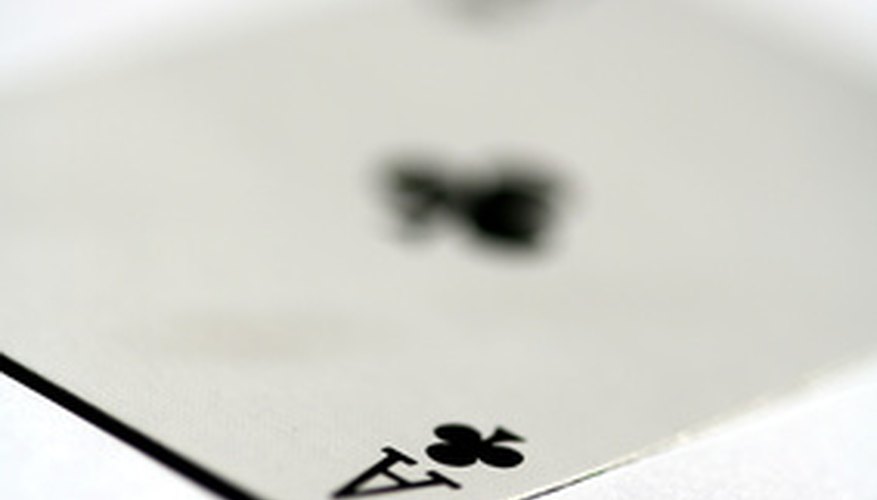Playing cards over the centuries have been adapted to new and ever more complicated games, forms of gambling and the demands of card conjurors. They should not be viewed as static objects but as objects capable of transformation and editing. Removing the ink from a playing card is one way card conjurors and gamblers have evolved the playing card to suit their purposes.
Choose a low ranking spot card to begin with. Aces and deuces are the best bet, as they have less ink to deal with compared to high spot cards or court cards.
- Playing cards over the centuries have been adapted to new and ever more complicated games, forms of gambling and the demands of card conjurors.
- Aces and deuces are the best bet, as they have less ink to deal with compared to high spot cards or court cards.
Rub the eraser across the ink you want erased. Focus on small sections of the card at a time, i.e. a single pip or a corner number or letter. A combination of horizontal, vertical, and sideways strokes seems to remove the ink best. (It might depend what kind of finish the manufacturer used on the playing cards as to how much erasing will be required.)
Continue erasing until the ink is completely removed.
In an open, well ventilated area, apply the nail polish remover to a cotton ball or a Q-tip, depending on the precision needed.
- Continue erasing until the ink is completely removed.
- In an open, well ventilated area, apply the nail polish remover to a cotton ball or a Q-tip, depending on the precision needed.
Rub the cotton ball or Q-tip over the ink you want removed. Repeat until ink is gone.
Wipe off excess nail polish remover and allow the card to dry. This may cause a lingering smell on the cards.
Rub a pad of steel wool roughly across the surface of the playing card. Be sure it's not one of those steel wool pads with blue soap in it. If it is, use an older pad that no longer has soap in it.
Continue rubbing until the ink is gone.
Brush the debris from the card.
This method is best when used to remove indiscriminate sections of ink, particularly for marking a deck. Use the tip of the X-acto knife to lightly scratch off small sections of the back or front ink design to "mark" your card.
Use a horizontal movement rather than a vertical movement to remove the ink.
If you scratch too hard, you'll increase the visibility of the scratch marks left on the card. You might also cut right through the playing card. It doesn't take much force to scrape away the ink. This is a great method for secretly "marking" cards when you have a system that requires slight alteration to the back design in conjunction with pencil or ink marks.
- Continue rubbing until the ink is gone.
- This is a great method for secretly "marking" cards when you have a system that requires slight alteration to the back design in conjunction with pencil or ink marks.
TIP
If using an eraser, a pencil eraser works well but seems to leave behind more shiny rubber residue, which is detectable under some types of lighting. Using steel wool will leave visible scratch marks on the card and might not be ideal for all applications.
